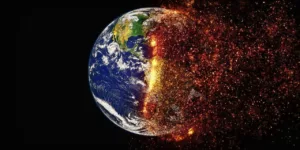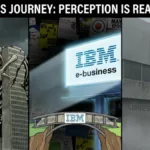Farming has changed dramatically over the past century. In fact, the word “farming” itself has given way to “agribusiness,” as the Jeffersonian archetype of a farmer has been replaced by the pinstriped CEO of a multinational business.
In the fields, the change has been equally dramatic. Tractors and combines are expensive, high-tech vehicles, equipped with GPS, air conditioning, and the Internet. Seeds are bought from biotech companies that engineer plants for insect resistance, appearance, and profit.
But where change is really needed, high-tech solutions have been lacking, says insurance professional Neil Mitchell. From the vantage point of his data-driven industry, he’s seen the tremendous costs of environmental degradation. Together with climate change, inefficient agricultural and livestock practices are harming the planet, he warns.
The recent history of the Chesapeake Bay is one example. The inefficiency here is fertilizer-based nutrient pollution, and the victims include the Bay’s world-famous crabs, oysters, and fish, as well as the underwater plant life that helps sustain them. Phosphorus and nitrogen washing into the Bay from fertilized fields has produced a vast “dead zone” in this storied estuary.
At the current rate, more than a third of the Bay may soon become such a dead zone, a place where algae bloom generated by excess nutrients block sunlight and deplete oxygen in the water.
A study by the Environment Maryland Research and Policy Center traced the problem directly to two types of blithely unaware creatures: chickens — and humans.
“Industrial-scale chicken production, particularly in Maryland’s lower Eastern Shore, generates huge volumes of manure,” noted the Center in a comprehensive report. While national poultry companies are efficient in ensuring that chickens end up in pots or paper buckets, they often let local growers cope with disposing of the high volumes of manure. Not surprisingly, this unwanted by-product is eventually spread to agricultural fields.
It’s not just runoff from poultry operations that is causing profound environmental damage. Conventional fertilizers also contribute to dead zones, as well as seep into groundwater and endanger drinking supplies. Less well-known is their impact on the air itself.
Conventional fertilizers have a profound effect on local air quality, while also producing negative atmospheric effects. Animal-based fertilizer releases ammonia, methane, and nitrous oxide, a gas that is hazardous to the planet’s ozone layer. Chemical varieties also contribute ammonia and nitrous oxide, plus nitrogen oxides.
Some of these substances are the corrosive components of acid rain, and methane in particular is a potent greenhouse gas that contributes to climate change. In addition, the manufacture of chemical fertilizers is a high-energy, high-emissions process that negatively impacts the air and any creature who may hope to breathe it.
“Agriculture is so important to our society and economy, but we’ve really fallen behind when it comes to applying technology to eliminate the inefficiencies on the farm or ranch that are damaging our planet,” says Mitchell. “Whether we’re talking about family farmers or agribusiness executives, I believe everyone in this vital industry wants to see an improvement in practices, from planting to harvest, and technology is the bridge that can get us there — and heal the Earth.”
Written by Lara Harper








